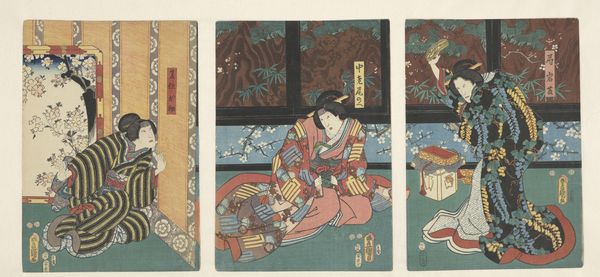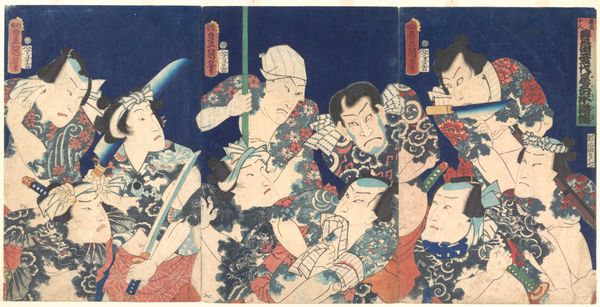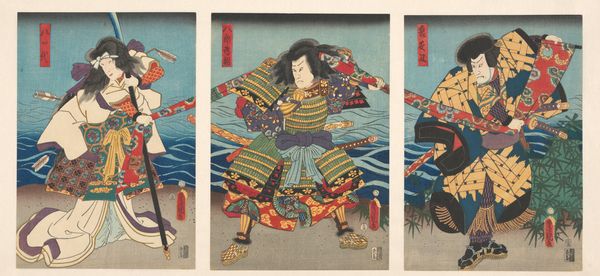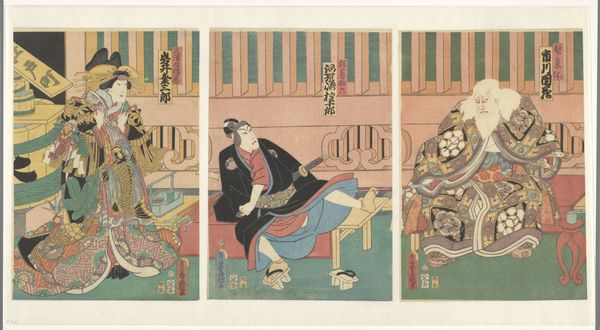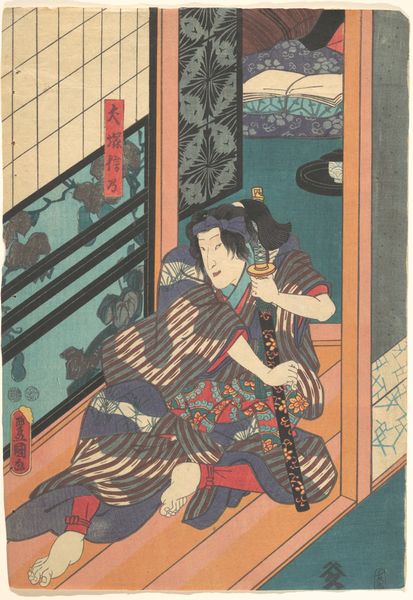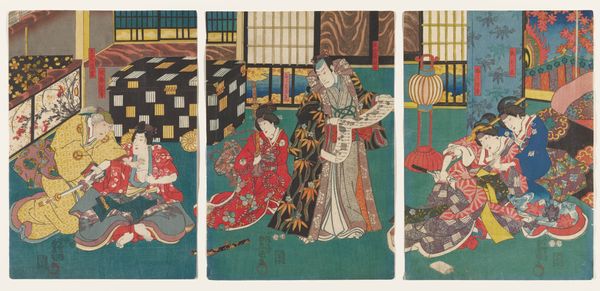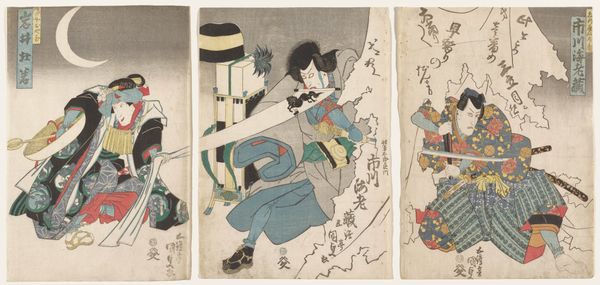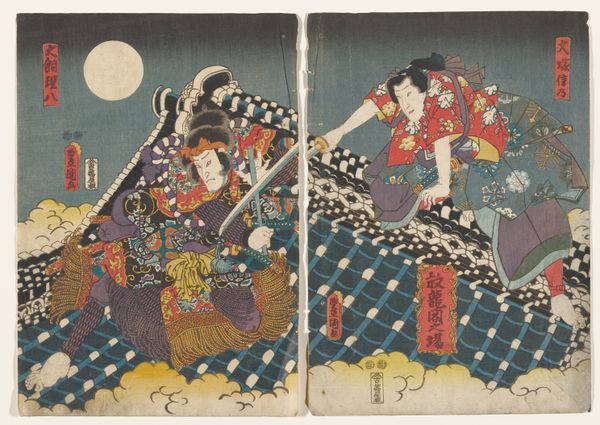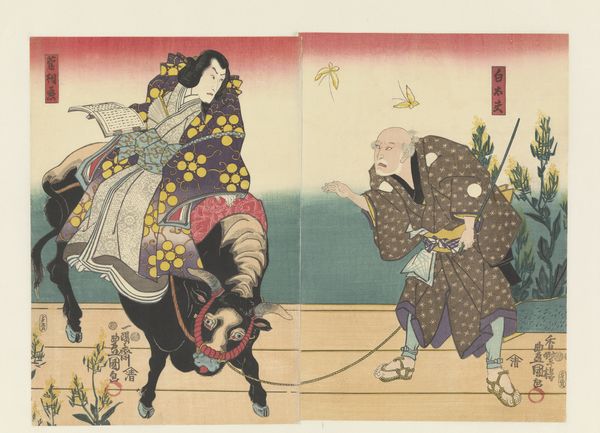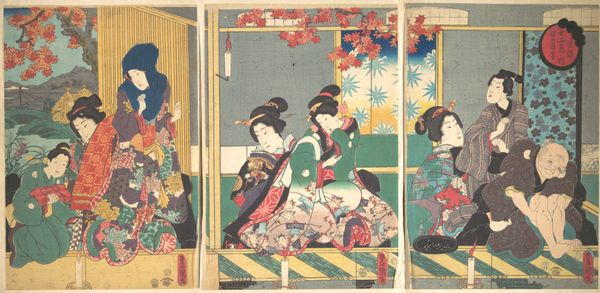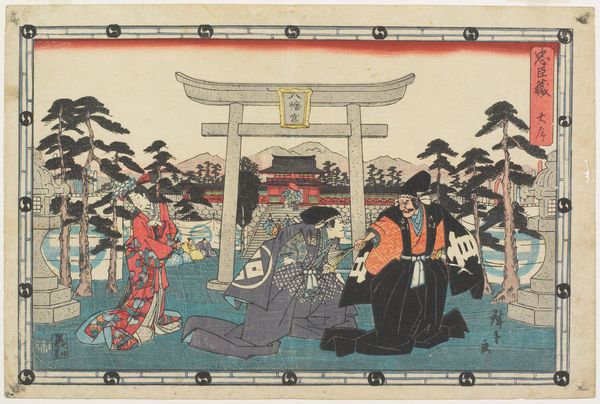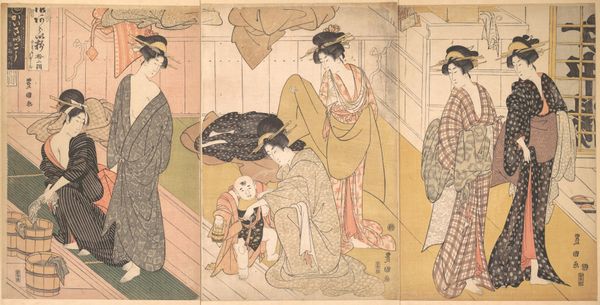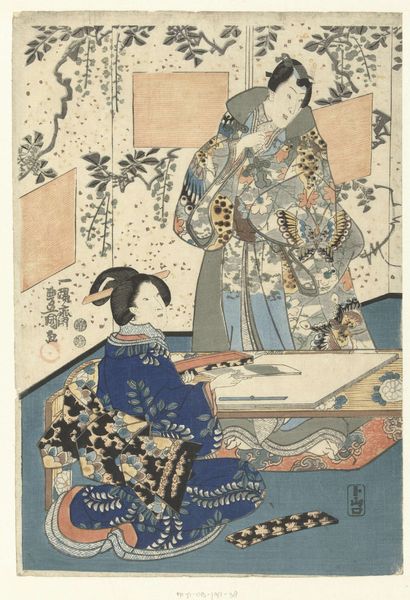
Trial Scene from The Story of the Judge Aoto Fujitsuna Possibly 1849
0:00
0:00
print, ink, woodblock-print
#
narrative-art
# print
#
asian-art
#
ukiyo-e
#
japan
#
figuration
#
ink
#
woodblock-print
Dimensions: 14 × 29 3/16 in. (35.6 × 74.1 cm) (vertical ōban triptych)
Copyright: Public Domain
Curator: Today we’re looking at "Trial Scene from The Story of the Judge Aoto Fujitsuna", a vibrant woodblock print attributed to Utagawa Kunisada, dating back to possibly 1849. It's part of the Minneapolis Institute of Art's collection. Editor: My first impression is one of intense observation and almost comical discomfort. Everyone seems to be either peering intensely or kneeling awkwardly! Curator: The work reflects the ukiyo-e tradition, commonly known as pictures of the floating world, depicting scenes from popular culture, particularly kabuki theatre, which heavily influenced Kunisada’s oeuvre. Here, he captures a moment of high drama within a trial scene. Editor: Yes, I immediately sense the performative aspect, which seems to underscore the artificiality of power dynamics within legal systems. The bright colors and exaggerated expressions heighten the tension. What does the story of Judge Aoto Fujitsuna reveal about judicial ideals of the time? Curator: Aoto Fujitsuna was a magistrate known for his unwavering commitment to justice and incorruptibility, even at personal cost. In this specific tale, which was commonly staged, his principles are put to the test, reflecting contemporary concerns around bureaucratic integrity. Editor: The visual storytelling is intriguing. There are three distinct panels: each captures a segment of the unfolding narrative, almost like a graphic novel panel, emphasizing discrete acts of looking and accusation. The panel on the right has a certain predatory, intimate feel to it. The person is hunched down looking toward someone behind them. What does that contribute to our understanding? Curator: Well, these compositions weren’t only about aesthetics; they reflected Edo-period social values, using conventions to quickly telegraph information. For example, attire denotes status, the expressions telegraph intention and the entire triptych suggests the interconnected nature of public life and personal drama. Editor: So, how would you contextualize Kunisada's adaptation within the broader social discourses prevalent during the late Edo period, especially given the political reforms known as the Tenpō Reforms aimed at censoring kabuki and ukiyo-e due to moral concerns? Curator: This piece can be interpreted as both a reflection and a form of subtle resistance to those reforms. By focusing on the venerable figure of Judge Aoto, Kunisada implicitly upholds certain Confucian ideals of good governance and social harmony while still offering a vibrant and potentially subversive theatrical narrative. Editor: So ultimately this triptych is engaging in both historical context and its aesthetic qualities, highlighting the layered dialogues occurring during times of change in Japanese society. The print makes me contemplate power and ethics and how relevant those themes still remain. Curator: Indeed, and when seen through a long lens, this woodblock print stands as a potent example of how art mediates and responds to cultural shifts, making its resonance surprisingly durable even now.
